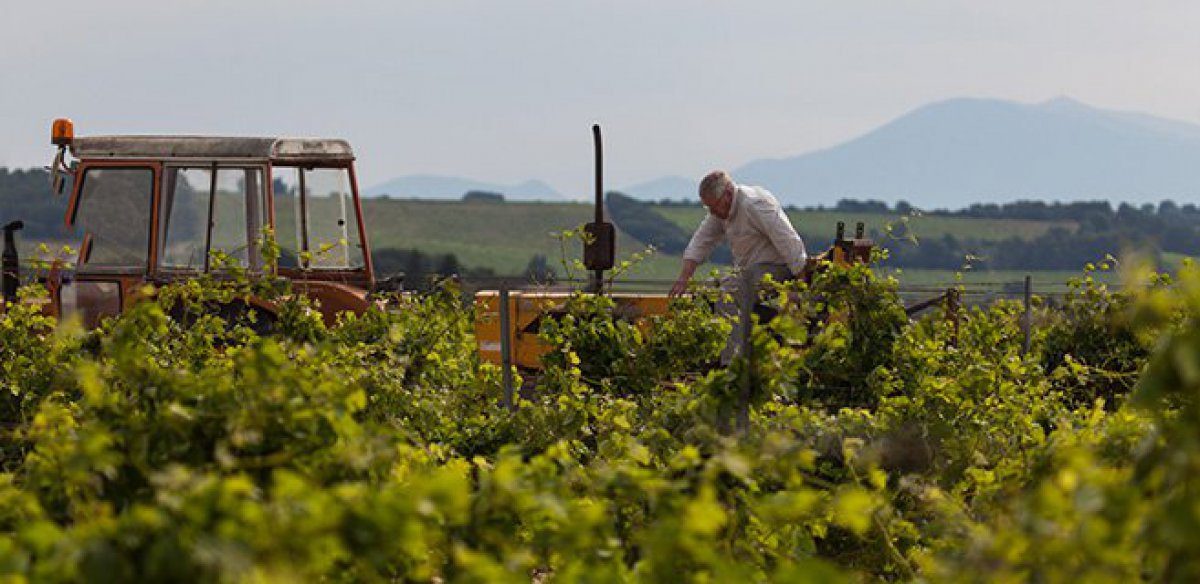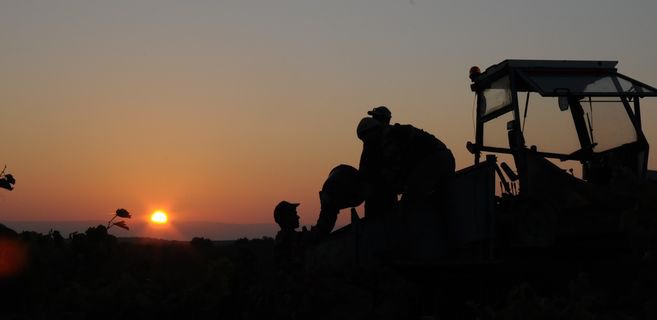
We use sustainable farming methods, boasting utmost respect for our vineyards and concerned about preserving a healthy long-term growing environment.
We therefore believe in:
- never using any sort of herbicide or pesticide,
- partial companion planting of the vineyards, meaning that we leave grass grown around the vines.
The main benefits of this are:
- Improve the structure and load bearing capacity: machines can enter the vineyards without sinking into the ground, therefore without compacting the superficial layer.
- Protect the soil from harsh climatic conditions, notably hydraulic – limiting the natural gullying and infiltration of water by using a larger root system,
- Make vines compete for water access, allowing notably for a higher concentration of sugar and aromas in the grapes and a reduction in the yield.
Ploughing
Ploughing is an ancestral method for working the soil. It was especially used during the Antiquity period to bury the seeds well into the ground, allowing them to grow and prevent them from being eaten by birds.
Nowadays, ploughing is a controversial subject. It has many benefits but also some inconveniences.
Benefits:
- It restructures and aerates the soil, forcing the roots to grow deep-down in order to find the necessary nutrients,
- It mixes the soil with farming residue, solid dung, lime and mineral fertiliser, while introducing oxygen,
- It controls several perennial weeds and prevents other weeds from growing in the spring at the same time as the vines,
- It breaks the disease cycle.
Inconveniences:
- It creates a “plough plan”, especially when the soil is wet,
- It exposes the soil to erosion (which can be fairly extensive on fragile soil such as loamy soil),
- It greatly reduces the quality and quantity of the organic surface matter,
- It buries surface vegetable residue, therefore promoting their anaerobic decay (in the case of deep ploughing) and therefore soil acidification.
Ploughing on the Domaine is therefore considered and studied depending on the plot characteristics (soil and vegetation condition, etc …) weather conditions, material aspects,…
Nevertheless, we mostly use ploughing but only on the superficial soil layers to limit the presence of weeds, all the while preserving its microbiological life.
Anecdote
With the present ploughing methods, there is a high risk of soil erosion, with perhaps a millimetre eroding away each year. Keep in mind that for this miniscule amount of erosion, it will take ten years to get it back.

Pruning
The pruning system is imposed by the appellation rules: in gobelet for all the varieties except the Syrah which is tied up vertically.
Severe pruning is predominant at the Domaine, notably to prevent any loss when the vegetation starts to grow, as afterward only some small adjustments are necessary.
The Harvest
This is exclusively manual as it allows to, notably only choose the ripe grapes, eliminate any trace of rot, and more generally to look-after the vines without having them damaged by machines passing through.
Harvest time is one of the most important moments for the wine-maker. Even if the various ripening periods for grape varieties as well as plot specificities (hours of sunshine, absorption capacity, …) help define the harvest schedule, it’s only years of experience, hard work and careful observation that allows the wine-maker to identify the perfect time to harvest for each plot. The harvesting time, depending on the wine-type wanted, will therefore never be longer than 2-3 days.
At our Domaine, we like to pick perfectly-ripe, but not over-ripe, grapes. This is done to limit the degree of alcohol and to make ideally elegant, powerful wines.
See some photos of our vineyards in Autumn below

